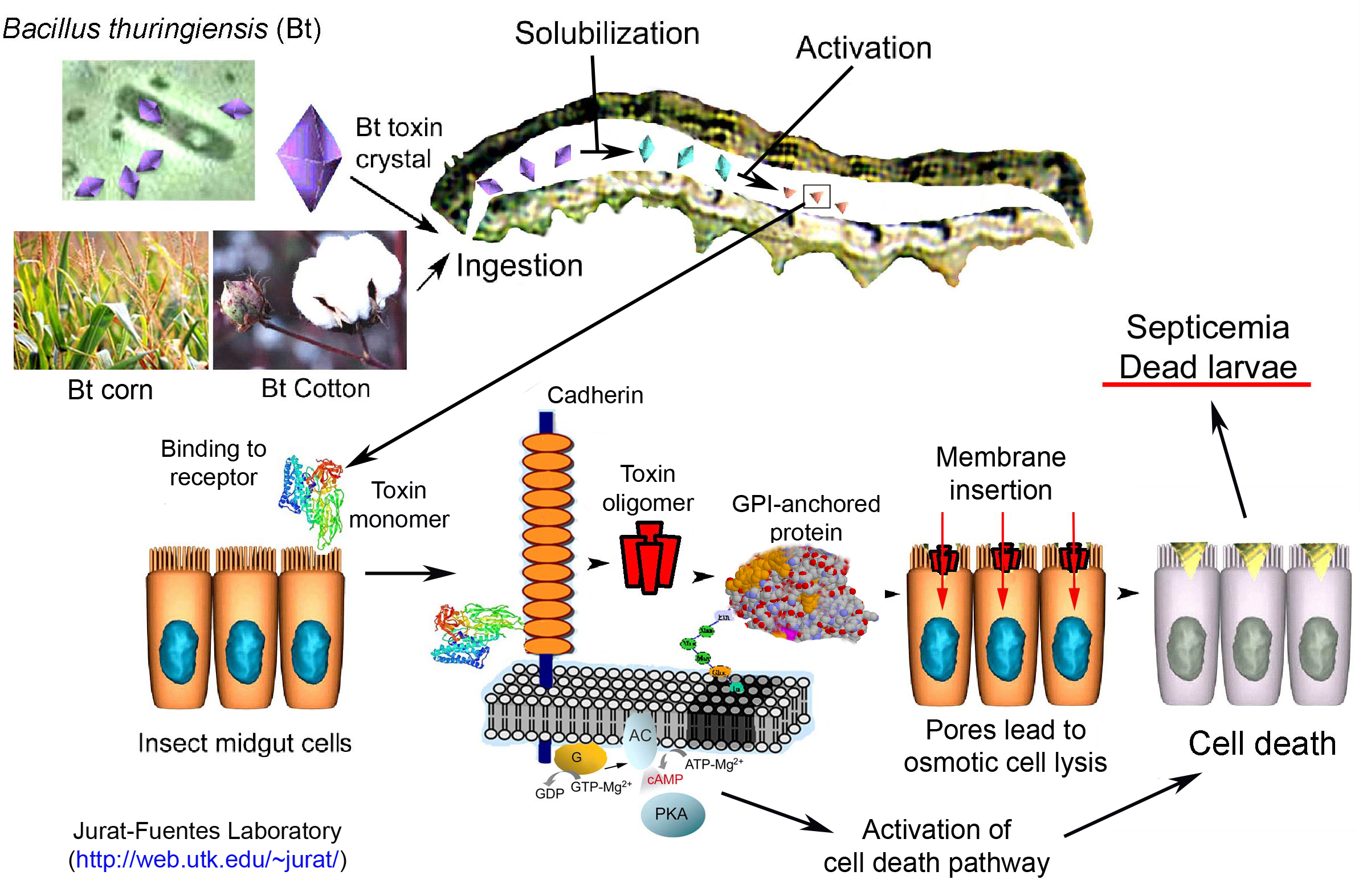To examine the binding of Bacillus thuringiensis δ-endotoxins, CryIAa, CryIAb, and CryIAc, to Lymantria dispar (gypsy moth) brush border membrane vesicles (BBMV), saturation kinetic analyses were conducted according to a two-step interaction scheme for δ-endotoxin binding to BBMV, rather than the one-step reversible binding presented in prior reports. So far, all published binding studies known to us have used the Scatchard equation or the Hill equation, which analyzes binding parameters assuming a one-step reversible interaction (Reaction 1): BS + T ↔ BS*T. Here BS is the binding site on the membrane, T is the toxin, and BS*T is the dissociable complex formed by binding site and toxin. However, a large body of evidence indicates that the binding between toxin and BBMV quickly becomes irreversible. A two-step interaction would describe toxin-BBMV interaction better than Reaction 1: BS + T ↔ BS*T→ BS-T (reaction 2). Here BS-T is the toxin irreversibly bound to the membrane. The order of toxicity of the δ-endotoxins, as measured by the dose required for a 50% inhibition of weight gain (ID50), was CryIAa (77.3 ng) > CryIAb (157 ng) > CryIAc (187 ng). While both the maximum extent of binding, Bmax, and the half-maximum insertion rate concentration, K1/2, was observed to be indirectly related to toxicity, the rate constant of irreversible binding, k2, was found to be directly correlated to toxicity.
Source:
Yizhi Liang, Smita S. Patel and Donald H. Dean. THE JOURNAL OF BIOLOGICAL CHEMISTRY Vol. 270, No. 42, Issue of October 20, pp. 24719 –24724, 1995

- Login om te reageren
